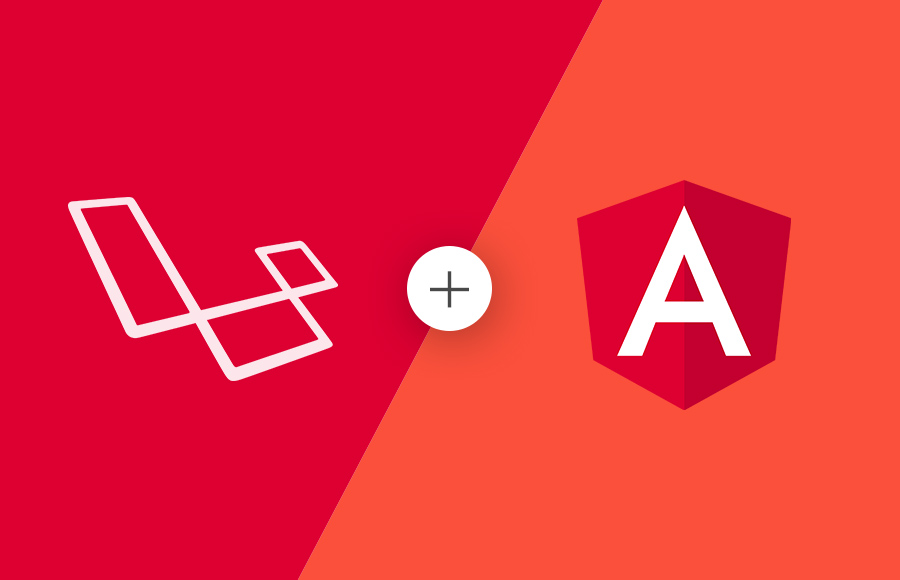Laravel framework with Angular 2 - Setup
Putting Laravel and Angular 2 in a single application, Yes you can use Angular2 with Laravel, and the recent releases already come with Vue js and its package.json where one can start with installing node modules and start developing. Angular 2 is a pure front-end framework. It’s meant to be used to generate pure static sites that contain only HTML, CSS, Javascript files, images and font files.
- New laravel 5.3 setup, there is a package.json file. Paste this code in this file.
{
"name": "YourProjectName",
"version": "1.0.0",
"private": true,
"scripts": {
"prod": "gulp --production",
"dev": "gulp watch",
"start": "tsc && concurrently \"npm run tsc:w\" \"npm run lite\" ",
"lite": "lite-server",
"postinstall": "typings install",
"tsc": "tsc",
"tsc:w": "tsc -w",
"typings": "typings"
},
"license": "ISC",
"dependencies": {
"@angular/common": "2.0.0",
"@angular/compiler": "2.0.0",
"@angular/core": "2.0.0",
"@angular/forms": "2.0.0",
"@angular/http": "2.0.0",
"@angular/platform-browser": "2.0.0",
"@angular/platform-browser-dynamic": "2.0.0",
"@angular/router": "3.0.0",
"@angular/upgrade": "2.0.0",
"core-js": "^2.4.1",
"reflect-metadata": "^0.1.3",
"rxjs": "5.0.0-beta.12",
"systemjs": "0.19.27",
"zone.js": "^0.6.23",
"angular2-in-memory-web-api": "0.0.20",
"bootstrap": "^3.3.6"
},
"devDependencies": {
"bootstrap-sass": "^3.3.7",
"gulp": "^3.9.1",
"jquery": "^3.1.0",
"laravel-elixir": "^6.0.0-9",
"laravel-elixir-vue": "^0.1.4",
"laravel-elixir-webpack-official": "^1.0.2",
"lodash": "^4.14.0",
"vue": "^1.0.26",
"vue-resource": "^0.9.3",
"elixir-typescript": "2.0.0",
"concurrently": "^2.2.0",
"lite-server": "^2.2.2",
"typescript": "^2.0.2",
"typings":"^1.3.2"
}
}- Create a file- tsconfig.json in your root directory.
{
"compilerOptions": {
"target": "es5",
"module": "commonjs",
"moduleResolution": "node",
"sourceMap": true,
"emitDecoratorMetadata": true,
"experimentalDecorators": true,
"removeComments": false,
"noImplicitAny": false
}
}- Create a file- typings.json in your root directory.
{
"globalDependencies": {
"core-js": "registry:dt/core-js#0.0.0+20160725163759",
"jasmine": "registry:dt/jasmine#2.2.0+20160621224255",
"node": "registry:dt/node#6.0.0+20160909174046"
}
}- Write command in your terminal-
npm install
After install go- node_modules> elixer-typescript> index.js file and comment this line as shown in code
//.pipe($.concat(paths.output.name))
Create a folder in resources>assets>typescript and create three file- app.component.ts, app.module.ts, main.ts
app.module.ts
///<reference path="../../../typings/index.d.ts"/>
import { NgModule } from '@angular/core';
import { BrowserModule } from '@angular/platform-browser';
import { AppComponent } from './app.component';
@NgModule({
imports: [ BrowserModule ],
declarations: [ AppComponent ],
bootstrap: [ AppComponent ]
})
export class AppModule { }
app.component.ts
import { Component } from '@angular/core';
@Component({
selector: 'my-app',
template: '<h1>My First Angular App</h1>'
})
export class AppComponent { }main.ts
import { platformBrowserDynamic } from '@angular/platform-browser-dynamic';
import { AppModule } from './app.module';
const platform = platformBrowserDynamic();
platform.bootstrapModule(AppModule);- Open gulpfile.js and paste this code...
const elixir = require('laravel-elixir');
require('laravel-elixir-vue');
require('elixir-typescript');
/*
|--------------------------------------------------------------------------
| Elixir Asset Management
|--------------------------------------------------------------------------
|
| Elixir provides a clean, fluent API for defining some basic Gulp tasks
| for your Laravel application. By default, we are compiling the Sass
| file for our application, as well as publishing vendor resources.
|
*/
elixir(mix => {
mix.sass('app.scss')
.webpack('app.js')
.copy('node_modules/@angular', 'public/@angular')
.copy('node_modules/anular2-in-memory-web-api', 'public/anular2-in-memory-web-api')
.copy('node_modules/core-js', 'public/core-js')
.copy('node_modules/reflect-metadata', 'public/reflect-metadata')
.copy('node_modules/systemjs', 'public/systemjs')
.copy('node_modules/rxjs', 'public/rxjs')
.copy('node_modules/zone.js', 'public/zone.js')
.typescript(
[
'app.component.ts',
'app.module.ts',
'main.ts'
],
'public/app',
{
"target": "es5",
"module": "system",
"moduleResolution": "node",
"sourceMap": true,
"emitDecoratorMetadata": true,
"experimentalDecorators": true,
"removeComments": false,
"noImplicitAny": false
}
);
})
;- Make a directory in public>app and write command in your terminal-
gulp
- Create a file systemjs.config.js in your public directory.
/**
* System configuration for Angular samples
* Adjust as necessary for your application needs.
*/
(function (global) {
System.config({
// map tells the System loader where to look for things
map: {
// our app is within the app folder
app: 'app',
// angular bundles
'@angular/core': '@angular/core/bundles/core.umd.js',
'@angular/common': '@angular/common/bundles/common.umd.js',
'@angular/compiler': '@angular/compiler/bundles/compiler.umd.js',
'@angular/platform-browser': '@angular/platform-browser/bundles/platform-browser.umd.js',
'@angular/platform-browser-dynamic': '@angular/platform-browser-dynamic/bundles/platform-browser-dynamic.umd.js',
'@angular/http': '@angular/http/bundles/http.umd.js',
'@angular/router': '@angular/router/bundles/router.umd.js',
'@angular/forms': '@angular/forms/bundles/forms.umd.js',
// other libraries
'rxjs': 'rxjs',
'angular2-in-memory-web-api': 'angular2-in-memory-web-api',
},
// packages tells the System loader how to load when no filename and/or no extension
packages: {
app: {
main: './main.js',
defaultExtension: 'js'
},
rxjs: {
defaultExtension: 'js'
},
'angular2-in-memory-web-api': {
main: './index.js',
defaultExtension: 'js'
}
}
});
})(this);
- After that in your welcome.blade.php paste this code
<!DOCTYPE html>
<html lang="en">
<head>
<meta charset="utf-8">
<meta http-equiv="X-UA-Compatible" content="IE=edge">
<meta name="viewport" content="width=device-width, initial-scale=1">
<title>Laravel 5.3 - Angular 2</title>
<!-- 1. Load libraries -->
<!-- Polyfill(s) for older browsers -->
{{ Html::script('core-js/client/shim.min.js') }}
{{ Html::script('zone.js/dist/zone.js') }}
{{ Html::script('reflect-metadata/Reflect.js') }}
{{ Html::script('systemjs/dist/system.src.js') }}
{{ Html::script('systemjs.config.js') }}
<script>
System.import('app').catch(function(err){ console.error(err); });
</script>
</head>
<!-- 3. Display the application -->
<body>
<my-app>Loading...</my-app>
</body>
</html>
Congrats! You are ready to open your first Angular 2 with Laravel 5.3 app in your browser. So open it!
 About Lavalite
About Lavalite


Comments
0 comments
Please Sign in or Create an account to Post Comments